Yesterday, we revealed our picks for the top commercial real estate stories of 2015, Nos. 11-15. Today we continue the countdown with stories six through 10. Check back tomorrow for the top five, and on Thursday for our list of what to watch in 2016.
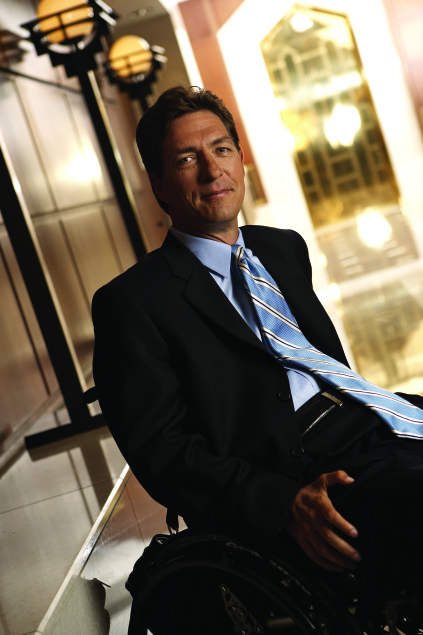
No. 6: DTZ Merges With Cushman & Wakefield
It was a big deal back in September 2014 when Cassidy Turley was sold to DTZ, a global firm backed by Fort Worth-based TPG Capital. As it turned out, that was only the warm-up act. Not quite a year later, DTZ aligned with Cushman & Wakefield in a $2 billion mega-merger. The deal created one of the largest commercial real estate firms in the world, with a combined total revenue of $5 billion and 43,000 employees.
Star power that shifted from DTZ to C&W locally included leasing specialists Johnny Johnson, Chris Taylor, and Trey Smith, along with tenant rep standouts Randy Cooper and Craig Wilson. Steve Everbach was initially tapped to lead North Texas operations of the new Cushman & Wakefield. In December, though, he moved to competitor Colliers International, becoming president of that firm’s Central region, and Bret Bunnett was named acting regional managing director of C&W.
Besides Everbach, C&W personnel who left to join other groups include JJ Leonard, who became managing director of Stream Realty Partners’ office division, and Bill Brokaw, who was named senior vice president of Hillwood Urban. Former DTZ executive managing director Frank McCafferty joined tenant rep firm Savills Studley as co-branch manager.
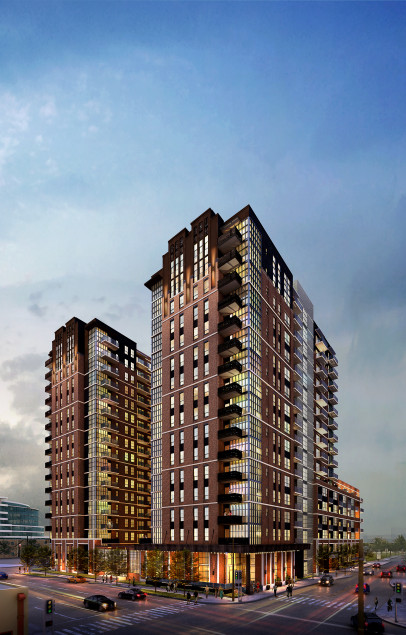
No. 7: Multifamily Tower Power
One needs only to look at the cranes in the sky to see that a multifamily boom has hit North Texas. Even with an abundance of development—24,000 units are scheduled to open by the end of the third quarter of 2016, according to MPF Research—demand is keeping pace. Occupancy is projected at 95.5 percent, the highest level in 14 years.
The millennials, of course, are a big reason why. But it’s downsizing baby boomers who are poised to drive multifamily demand in the future. That’s good news for developers, as land and construction costs are driving up rents.
For the first time in history, Dallas has an active new multifamily segment: the high-rise market. According to multifamily guru Brian O’Boyle Sr., vice chairman of ARA Newmark, 30 to 35 apartment towers are under development or planned for the region.
Among them is The Case Building, a 17-story complex from StreetLights Residential and investment partner Westdale Properties. Formed just five years ago, StreetLights has quickly become a leader in the high-rise segment, with projects like The Taylor (17 stories) and The Jordan (23 stories) in Uptown and The McKenzie (23 stories) in the Knox-Henderson district. The company also is working with RED Development on The Union in Uptown.
Trammell Crow Co. affiliate High Street Residential has been incredibly active, too. Along with a 32-story apartment tower at Park District in Uptown, the company is doing a 20-story complex on McKinney Avenue called M-Line Tower. Southern Land Co. also is joining the fray, with an 18-story tower in the Knox-Henderson neighborhood that will begin development in the first quarter of 2016.
No. 8: Startup Scene Takes Off
The entrepreneurial spirit has always been alive and well in Dallas. In 2015, the region got more purposeful about it. Organizations like the Dallas Entrepreneur Center came into their own, the Dallas Innovation Alliance—a collaboration of business, government, and educational and civic organizations—was formed, and D Magazine Partners teamed up with the Dallas Regional Chamber to launch Dallas Innovates.
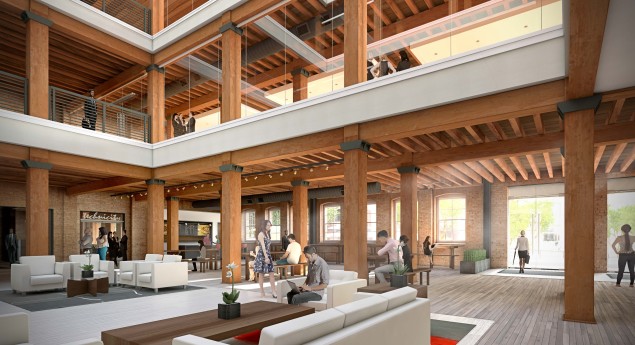
At the same time, a growing number of entrepreneurs began seeking co-working and startup space. Believing the movement will only get stronger, North Texas real estate developers and investors have jumped on board.
Much of the action is focusing in the downtown core and the West End. Alto Partners redeveloped its turquoise 1950s office tower at 211 S. Ervay St. into a “tech mecca” called Alto 211. Granite Properties acquired the 237,000-square-foot West End Marketplace at 603 Munger Avenue in July. It has renamed the building Factory Six03 and is doing an adaptive reuse to cater to the creative class.
Toward the end of the year, Goff Capital Partners, led by Crescent Real Estate’s John Goff, bought five historic properties from West End redevelopment pioneer Owen Hannay. Goff aims to reposition them into space targeting the same market.
The Cedars, the Design District, and Deep Ellum are also coming into play, with co-working spaces and other projects geared toward entrepreneurs.
No. 9: Nebraska Furniture Mart Opens for Business
Without seeing the 1.9 million-square-foot Nebraska Furniture Mart for yourself, it’s hard to get a sense of the project’s tremendous scale. After four years of site-selection and development work, the home furnishings and appliances superstore opened in the spring. It’s expected to draw as many as 10 million visitors a year.
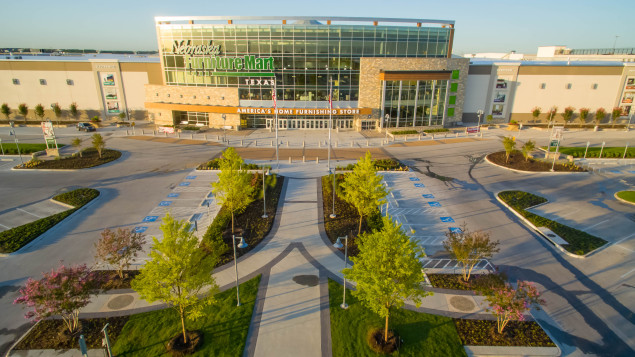
With a 560,000-square-foot retail store and 1.3 million-square-foot distribution center, Nebraska Furniture Mart anchors Grandscape, a mixed-use development off State Highway 121 in The Colony. At full buildout, Grandscape will have about 3.9 million square feet of retail, entertainment, dining, hospitality, residential, and office space. The complex has already secured two hotels and a number of restaurants, including Rock & Brews, a concept from Gene Simmons and Paul Stanley of the rock band KISS.
It has also sparked a run of land sales along the S.H. 121 corridor and the development of nearby hotel and retail projects. Property values have “gone crazy,” says Larry Leon, partner at Venture Commercial Real Estate, which helped assemble Grandscape’s 433-acre tract. “Land prices on that strip have, at a minimum, tripled. In some cases, they’ve gone up seven to 10 times compared to what they were just a few years ago.”
No. 10: Expansion of Old Parkland
When Harlan Crow acquired Old Parkland in 2006, he thought the historic former hospital would make a cool headquarters for his Crow Holdings. It required a great deal of vision; the exterior of the building had held up well, but inside, he found crumbling walls and ceilings, graffiti, water on the floors, and signs of vagrants about. Good Fulton & Farrell was tapped to oversee the redesign, and Crow spared no expense.
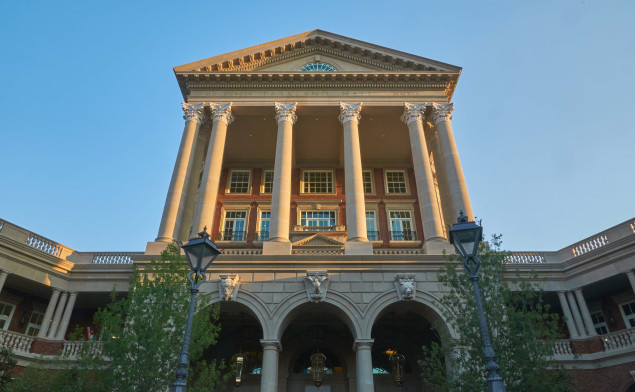
Today, Old Parkland has been transformed into the most exclusive office park in Dallas. Jeffersonian-style buildings are surrounded by sculptures and lushly landscaped lawns. Inside, fine paintings hang on the walls and historical artifacts are tucked into every nook and cranny. Along with the main building, which was completed in 2008, Crow redeveloped the Nurses Quarters. He then added Woodlawn Hall in 2009 and Reagan Place in 2011. Then came Maple Hall, the headquarters for TRT Holdings.
The final four buildings, which total about 150,000 square feet and line the western edge of the campus, opened in the fall of 2015 and have already been leased up. They include Parkland Hall (which features a striking copper-topped dome), Commonwealth Hall, Oak Lawn Hall, and a pavilion building, where a spiral staircase leads to a spectacular 175-seat underground debate hall. The buildings were designed by Dallas-based Beck and Dalgliesh Gilpin Paxton Architects of Charlottesville, Virgina. Beck also handled construction.
This story originally appeared in D CEO’s 2016 Real Estate Annual.




